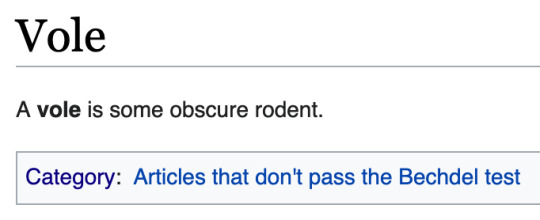#trochee
Explore tagged Tumblr posts
Text
x x / x x / x x / x /
Have u ev | er had sex | with a phar | oah ahhhhhhhhhhhhhhh
x x / x x x x / x /
put the | pussy | in a | scarmoph | ogoghs
first line is mainly-anapestic tetrameter, second line is a trochee ('pussy') preceded and followed by dibrachs, resolving into iambs for 'scarmophogoghs'
Have u ever had sex with a pharoah ahhhhhhhhhhhhhhh put the pussy in a scarmophogoghs
#DON'T ask me how many syllables are in that ahhhhhhh#anapestic#tetrameter#the meter rlly breaks down on the second line here which is appropriate as we start to lose control#it's nearly trimeter. in the sense that there are three stresses. but that sheer quantity of extra syllables scrambling around#dibrach#trochee#iamb
125K notes
·
View notes
Text
An Ending
This is dust: an end of time or start anew. Doorways open, doorways fasten- covens spellcast forming lives in dust to souls in dragons. Endless struggles bound betwixt and bound between; a darkling’s poetry neither stop nor starting, cycling dust until it Ends.
0 notes
Text

🎶ADHD hates me! Cannot focus!🎵
#intrusive trochees#teenage queuetant ninja turtles#trochaic mutant ninja tetrameter#image id in the alt text#teenage mutant ninja turtles#tmnt
326 notes
·
View notes
Text
/ x x / x x / / / x
got this at | cvs | just one | dollar.
tetrameter: two dactyls, a spondee and a trochee

got this at cvs just one dollar.
#dactylic#tetrameter#god i love a spondee. i especially love a spondee in a meter that otherwise uses three-syllable feet. nothing hits like it#if the poet had wanted a more regular dactylic meter here it would have been easy enough#'got this at cvs only a dollar' or similar#spondee does two rlly valuable things here to my mind#it makes the sentence structure clearer despite the lack of punctuation. just one dollar is a new idea it's metrically delivered as one but#without the interruption of a punctuation mark the sense is still preserved#and it makes the priorities of the poem stand out to ensure the humour lands. the 'this' isn't metrically distinct it's buried in the#unstressed syllables#the emphasis - and the wide-open possibilities revealed in the gaps between the slower syllables of the spondee - are all to do with the#value of it#also feel like it injects some grandeur metrically into a mundane subject so theres humour derived from that juxtaposition#spondee#trochee
24K notes
·
View notes
Text
finally saw pacific rim after many years of hearing about pacific rim & all factors averaged out i'd call it ok. there is nonetheless a chance i will watch it several more times in the near future because big robot fighting big monster very cool. they say these days that in order to create a successful satire or deconstruction you have to thoroughly love and understand the subject of your commentary. my hope is that this does not extend to aus and crossovers because unfortunately i am already brainstorming designs for galleon bravo (you already know whose jaeger this is)
19 notes
·
View notes
Text
x / x x / x / x / x / x
his pussy | was like | a What | aburg | er fryer
x / x / x x / / x / x
and brother | i was | the last | rat | in texas
pentameter (mostly iambs and amphibrachs)
his pussy was like a Whataburger frier. and brother. i was the last rat in texas
#actually gonna call this one#iambic#pentameter#since the first line does such a good job of establishing the feel of iambic pentamenter#kicking off each line with an amphibrach is so good. power move#i dithered on where to divide up the second line#'i was the | last rat' for a nice dactyl/spondee feel#but i just love inverting the iamb of 'was like' to a trochee on 'i was' to match the move from simile to metaphor#amphibrach#spondee#trochee#tagging them since theyre interesting here#also i live in the uk and therefore the nuances of the whataburger ref are lost on me. other scholars can chime in on that i guess
33K notes
·
View notes
Text

"Ekphrasis on Rereading David Copperfield" - a poem written 12/22/2023
#david copperfield#charles dickens#victorian literature#2023#james steerforth#rosa dartle#poetry#trochaic meter#trochees#feminine rhymes#trochaic trimeter#trochaic tetrameter#ive always wanted to rhyme startle with rosa dartle. for five years now#ps everyone should reread david copperfield but they should like wait awhile first#not long enough that you feel like you dont remember any of the novel but long enough that you realize#that five years is in fact a good length of time for your life to change#much like david's life changes throughout the novel!#i am not nineteen anymore. i feel that rereading david copperfield more than i feel that rereading my own poetry
5 notes
·
View notes
Text
Compare:
“It is better to reign in hell than to serve in heaven”
With
“Better to reign in hell than serve in heav’n”
#you’re really pushing it Milton#don’t think we don’t see that trochee mister#please come in I am very iambic and can be trusted 🙃
3 notes
·
View notes
Text
x / x / x / / x
A vole | is some | obscure | rodent
iambic tetrameter, ending with a trochee

#absolutely DELIGHTFUL poetry#the inversion at the end for 'rodent' is so fucking good. already the vowels in 'vole some obscure' blend nicely to make the iambs feel#slow. meandering. then there's a confusion a PAUSE engendered by the switch to trochees. the meter is throwing up its hands and#going 'fuck it idk' rhythmically. can't find the specific word that fits? a sudden energy from the trochee speeding things up#rodent. it lands with surety and assertiveness but it's also Incorrect#also noting the bolding on 'vole' . visually mirrors the stress of the iamb#iambic#tetrameter#trochee
34K notes
·
View notes
Text

🎶Social media feed! Reblog heavy!🎵
#intrusive trochees#teenage queuetant ninja turtles#send me anything!#trochaic mutant ninja tetrameter#image id in the alt text#teenage mutant ninja turtles#tmnt
264 notes
·
View notes
Text

"Old Shakespeares" - a short rondel written 8/26/2023
#this is the first day in creatediana history where ive written and posted two poems on the same day#and the reason for this historic triumph is that... i simply felt like it#i just wanted to#short rondel#2023#form poetry#trochaic meter#trochees#feminine rhymes#trochaic tetrameter#trochaic trimeter#rhyme scheme#poem#poets on tumblr#poetry#digital poetry
6 notes
·
View notes
Text
when people say that writing in iambic pentameter is hard i reflect on the vast width of experience in the world, because tonight I realized that half of the dialogue in this fic I've been writing is in iambs, presumably because I saw Richard II a week ago and have been thinking about it since
#mine#iambic pentameter is basically the most classic form to write your lines into. if i'm honest#i am basically a linguistic sponge but also like i rlly cannot stress enough#english falls so naturally into iambs or trochees. it's not rocket science#it just happens
1 note
·
View note
Text

🎶Dairy product mouthful! Jacob Andrews!🎵
#teenage queuetant ninja turtles#intrusive trochees#trochaic mutant ninja tetrameter#image id in the alt text#teenage mutant ninja turtles#tmnt#drawfee
350 notes
·
View notes
Text
I realised this morning that We Didn't Start the Fire and the Major-General's song exist at opposite ends of the spectrum of widely-parodied songs.
I don't think I've ever heard a version of We Didn't Start the Fire that got the scansion right, or a version of the Major-General's song that got it wrong.
This probably says less about the songs themselves and more about the easy availability of iambs vs trochees in English.
298 notes
·
View notes
Text
Rhythm and Breath in Dragon Age: Inquisition
Inquisition plays around with a couple recurring rhythms:
iambic pentameter (dagger skill tree, Maryden)
trochaic tetrameter (Saga of Tyrdda Bright-Axe)
the cadence from the song Hallelujah (Solas)
Many folks have already written technical comparisons of these different rhythms, but I specifically wanted to talk about how they handle breath.
Without even paying attention to the word content of these rhythms, the breath patterns help set the mood. Are my breaths regularly spaced? Am I gulping for air? Am I breathing slowly and calmly?
As we go through the different rhythms, try reading them aloud to see where your breath lands.
Iambic Pentameter
Iambic pentameter is a five (penta-) foot meter, where each foot is an iamb. An iamb is a two-syllable “da-DUM” sound, an unstressed syllable followed by a stressed syllable. So each line has 10 syllables total.
Here’s an example from the dagger skill tree, with the feet color-coded:
You leap through shadows to attack your foe
With deadly strikes that hit them from behind.
Before your target turns to face your blow,
You move to stealth, impossible to find.
If we read this aloud, we find that 10 syllables is a lot! There are very few mid-line commas, so we naturally want to breathe between lines. But each of those breaths needs to last for ten syllables. If we don’t want to pass out, we’re reading the lines a bit faster than we normally would.
The iambs add even more forward momentum. Since we need to save more breath for the second syllable in each pair, we hurry slightly faster over the unstressed syllables.
Because we keep repeating that same syllable count and stress pattern, the overall effect is one of speed and precision. This is a rogue rapidly making blow after blow after blow with their daggers, hitting every single time. This is Maryden rattling off each sentence with perfect poise and musical training. There’s no time here for thinking; no room for mistakes. The next line is going to be ten syllables too. And the next. And the next.
Trochaic Tetrameter
By contrast, the Saga of Tyrdda Bright-Axe only has 4 (tetra-) trochees (DUM-da) per line. On every other line, the final unstressed syllable is dropped (catalexis).
That’s a lot of jargon, let’s color code the feet:
Tell the tale of Tyrdda Bright-Axe
mountain maker, spirit’s bride:
Free, her people, forged in fastness
made in mountains, hardy hide.
This is a classic meter, often found in nursery rhymes and folk songs. Because there’s only 8 syllables per line (plus lots of mid-line commas), we can read each line at a casual pace, without speeding up. The catalexis adds extra emphasis to the rhyming lines, since we get to the last (7th) syllable with more breath to spend. And even within each foot, we don’t have to manage our breath as much, because the stressed syllable comes first.
This creates a comfortable rhythm that lends itself to memorization and recitation. We can easily imagine this saga being passed down beside a campfire.
Hallelujah
Since the Hallelujah cadence comes from music rather than poetry, it has an additional kind of stress, the mid-measure secondary stress.*
We don’t exactly have feet, but we can color code each measure:
I lay in dark and dreaming sleep
while countless wars and ages passed.
I woke still weak a year before I joined you.
For the first two lines, each measure is 4 syllables long, so we get 8 syllables in each line, similar to the Tyrdda poem. If we read it aloud, it’s easy to do it slowly and thoughtfully. The secondary, quieter stresses also create an echoing effect, which emphasizes that Solas is thinking about the past.
Then the last line goes absolutely bananas. It abandons the unstressed-stressed repetition and gets much longer, flying up to 11 syllables — even longer than the 10-syllable lines in iambic pentameter.
Additionally, Solas tends to glue the first two lines together, which is SIXTEEN syllables, so they sound closer to an octameter** than the tetrameter(ish) sound of the original song.
The overall effect is of someone trying to be measured and thoughtful, but partway through he gets hit with nostalgia and the lines spill out in a long breathless rush. Bro has to speak quietly so he doesn’t totally run out of air.
*Music theory sidebar: Leonard Cohen’s original version is in 12/8 time, so the secondary stress isn’t as prominent. It shows up in one or two verses, but not all. A lot of the subsequent covers, including k.d. lang’s, sound more like 6/8. That means every measure has a 2-beat count: 1-2-3 4-5-6. I think the 6/8 version fits Solas’ speech pattern a bit more. But he’s not singing, and secondary stresses are harder to place. Syllables don’t have to align 1:1 with melody notes (in fact, in Hallelujah there are several places where the syllable alignment changes from verse to verse). So someone else could easily hear a slightly different stress pattern.
**This implies a cursed version of Solas where the last line is omitted and he’s actually syncing his speech to Modern Major-General.
#dragon age#dragon age inquisition#dragon age inquisition spoilers#trespasser spoilers#dragon age spoilers#solas dragon age#maryden dragon age#tyrdda bright-axe#iambic pentameter#trochaic tetrameter#dragon age meta
204 notes
·
View notes
Text
Some Poetry Terminology

Alliteration. Close repetition of consonant sounds, especially initial consonant sounds.
Anapest. Foot consisting of 2 unstressed syllables followed by a stress.
Assonance. Close repetition of vowel sounds.
Blank verse. Unrhymed iambic pentameter.
Caesura. A deliberate rhetorical, grammatical, or rhythmic pause, break, cut, turn, division, or pivot in poetry.
Chapbook. A small book of about 24-50 pages.
Consonance. Close repetition of consonant sounds--anywhere within the words.
Couplet. Stanza of 2 lines; often, a pair of rhymed lines.
Dactyl. Foot consisting of a stress followed by 2 unstressed syllables.
Decasyllable. Line consisting of 10 syllables.
Enjambment. Continuation of sense and rhythmic movement from one line to the next; also called a "run-on" line.
Envoi. A brief ending (usually to a ballade or sestina) no more than 4 lines long; summary.
Epigraph. A short verse, note, or quotation that appears at the beginning of a poem or section; usually presents an idea or theme on which the poem elaborates, or contributes background information not reflected in the poem itself.
Foot. Unit of measure in a metrical line of poetry.
Galleys. First typeset version of a poem, magazine, and/or book/chapbook.
Hendecasyllable. Line consisting of 11 syllables.
Hexameter. Line consisting of 6 metrical feet.
Honorarium. A token payment for published work.
Iamb. Foot consisting of an unstressed syllable followed by a stress.
Line. Basic unit of a poem; measured in feet if metrical.
Meter. The rhythmic measure of a line.
Octave. Stanza of 8 lines.
Octosyllable. Line consisting of 8 syllables.
Pentameter. Line consisting of 5 metrical feet. For instance, iambic pentameter equals 10 syllables (5 unstressed, 5 stressed).
Quatrain. Stanza of 4 lines.
Quintain. Stanza of 5 lines.
Refrain. A repeated line within a poem, similar to the chorus of a song.
Rhyme. Words that sound alike, especially words that end in the same sound.
Rhythm. The beat and movement of language (rise and fall, repetition and variation, change of pitch, mix of syllables, melody of words).
Septet. Stanza of 7 lines.
Sestet. Stanza of 6 lines.
Spondee. Foot consisting of 2 stressed syllables.
Stanza. Group of lines making up a single unit; like a paragraph in prose.
Strophe. Often used to mean "stanza"; also a stanza of irregular line lengths.
Tercet. Stanza or poem of 3 lines.
Tetrameter. Line consisting of 4 metrical feet.
Trochee. Foot consisting of a stress followed by an unstressed syllable.
Source ⚜ More: Word Lists ⚜ References for Poets
#poetry#terminology#writeblr#poets on tumblr#literature#writing prompt#spilled ink#dark academia#writing reference#writers on tumblr#creative writing#langblr#linguistics#louis janmot#art#romanticism#writing resources
111 notes
·
View notes